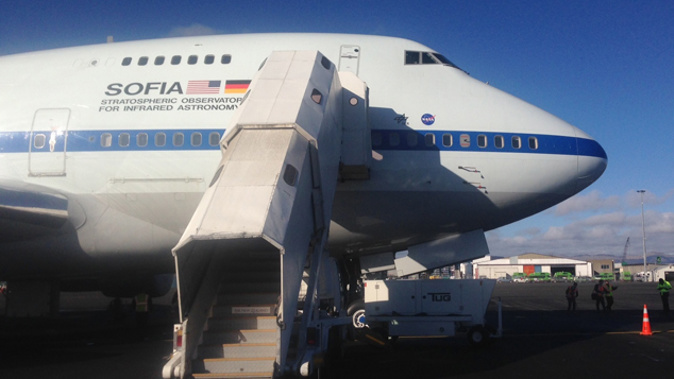
Less than a month after NASA launched its gamma-ray carrying scientific balloon from Wanaka Airport, the South Island is already hosting another group of the world's premier astrophysicists, this time in Christchurch.
For the next seven weeks, up to a hundred NASA scientists and engineers will be in the garden city conducting more than two dozen scientific flights on board SOFIA, the world's largest flying observatory.
SOFIA stands for Stratospheric Observatory for Infrared Astronomy.
The modified 747 is equipped with a 17-tonne telescope that sits in the back half of the plane, in front of a garage style door that opens when the plane is 'stratospheric' which is around 14 kilometres high.
Years of scientific research and engineering by NASA means people inside the cabin of the plane can't tell when the door is open.
Each flight takes about ten hours, and during that time the telescope captures images that allow scientists to learn more about star formation, the chemistry surrounding the interstellar medium and the composition of planetary atmospheres.
It's the team's third time in Christchurch, after visits in 2013 and 2015.
NASA programme manager Eddie Zavala says the southern hemisphere has much better access to the sources they want to capture in the galactic centre.
And this part of the world also has the cold and dry atmosphere which makes such work possible, because there's much less water vapour in the air.
They're based out of the U.S. Antarctic Program Center by Christchurch Airport which is empty during the winter off season.
The SOFIA programme has a yearly budget of around $100 million.
Take your Radio, Podcasts and Music with you









